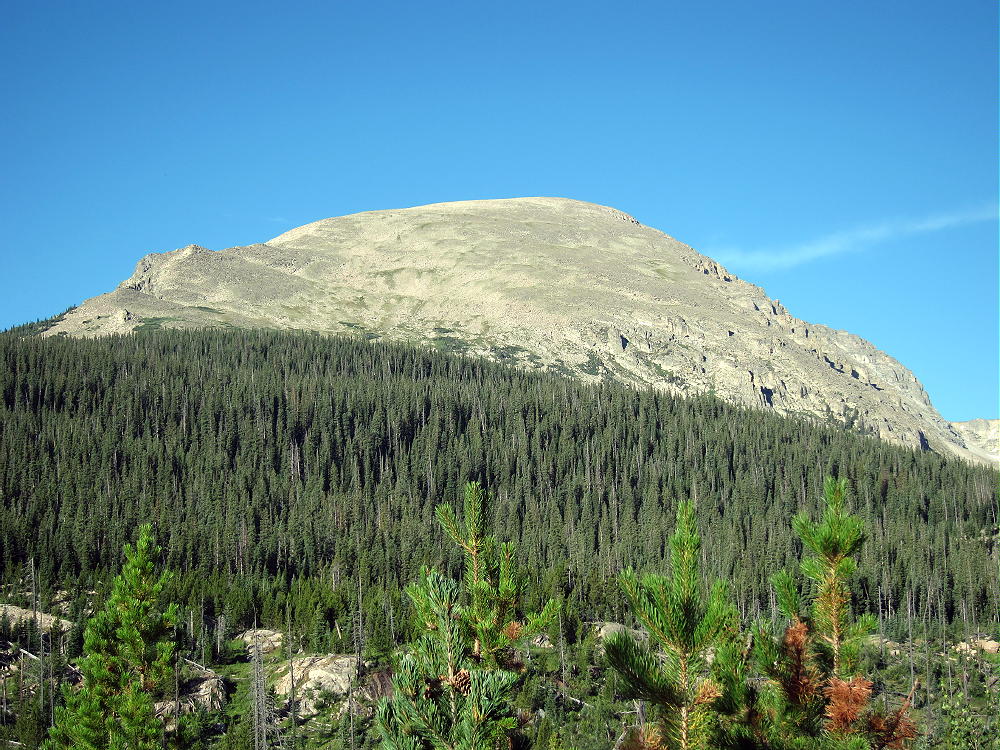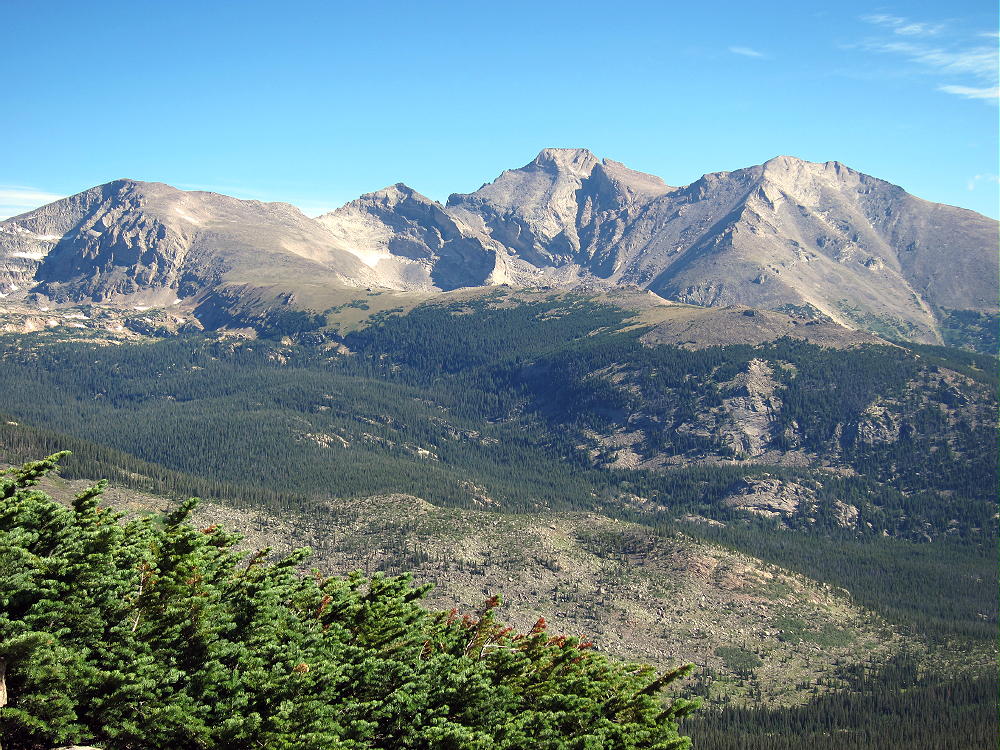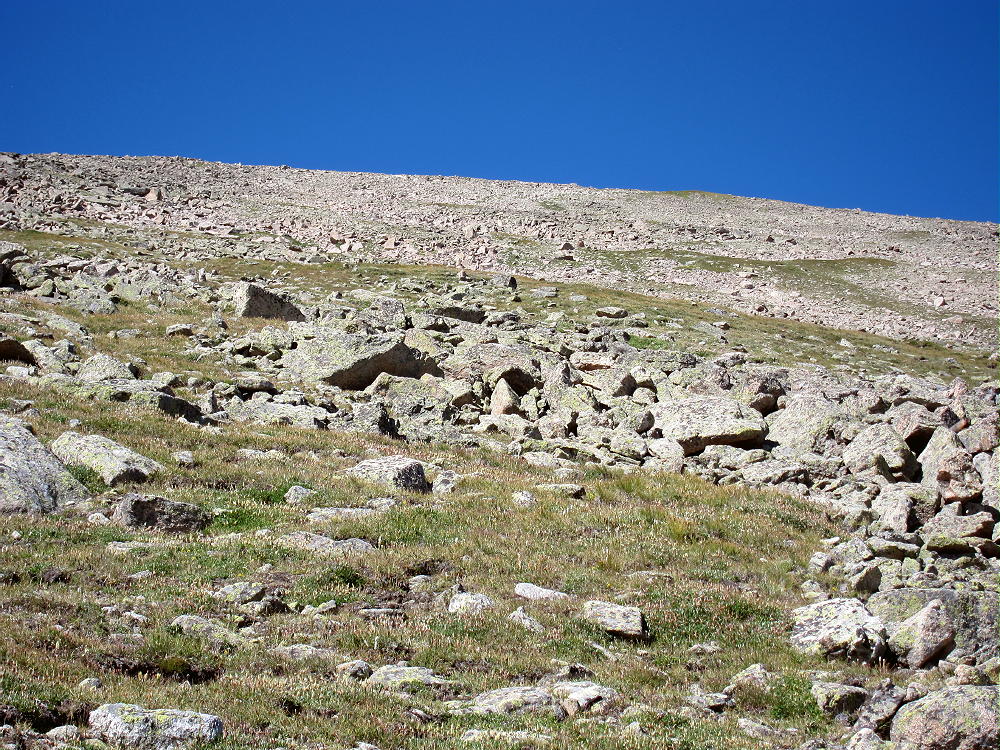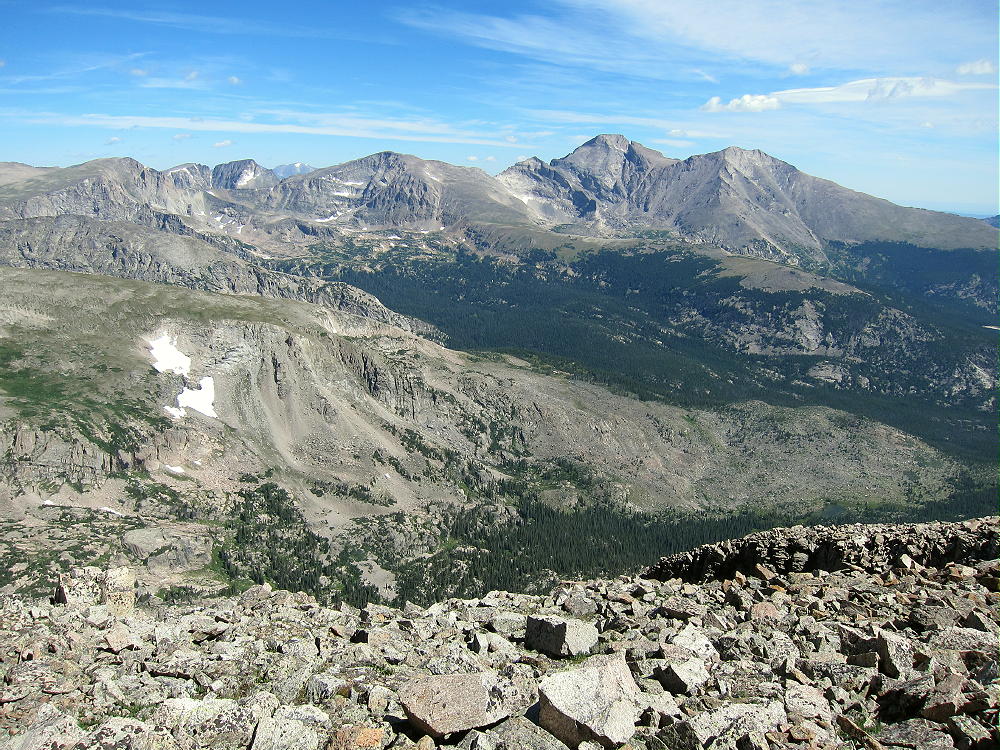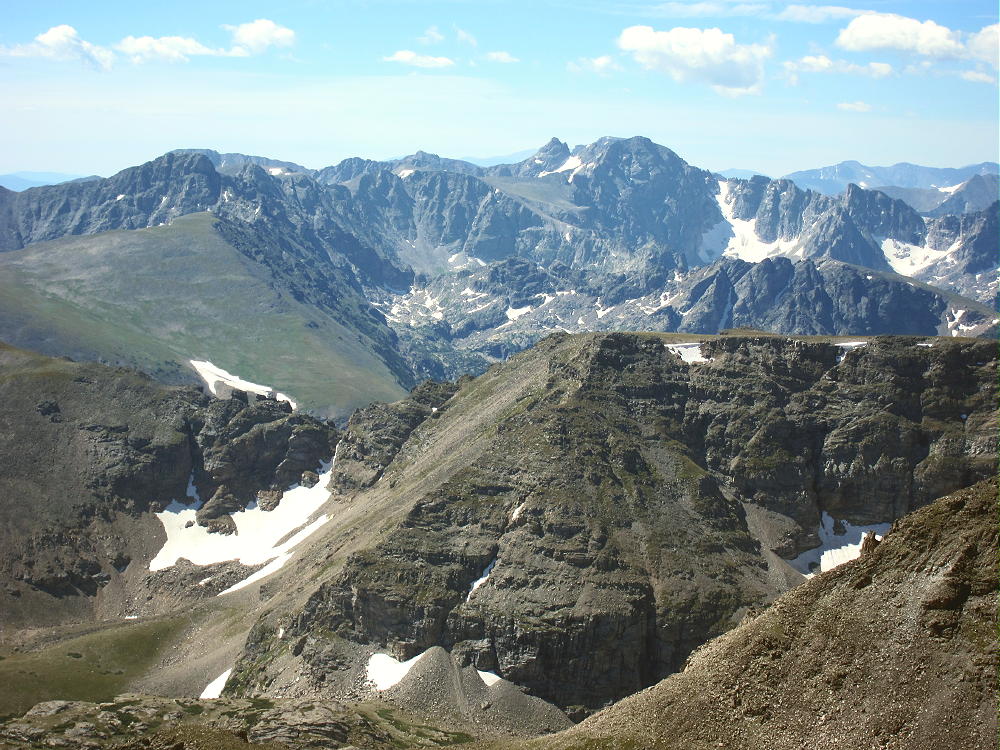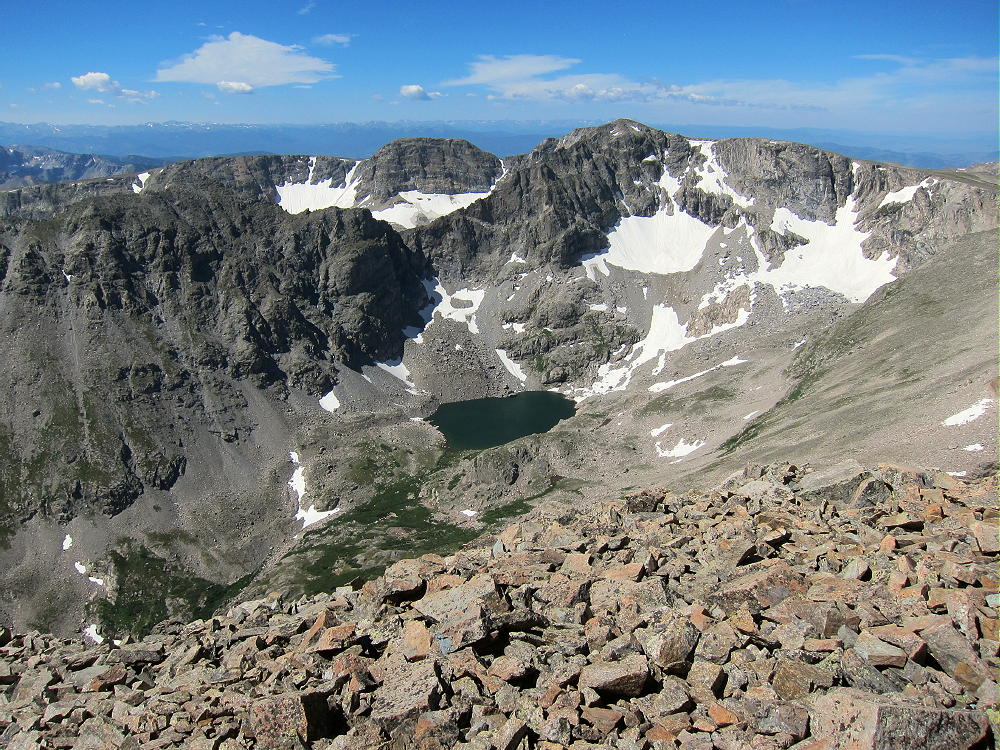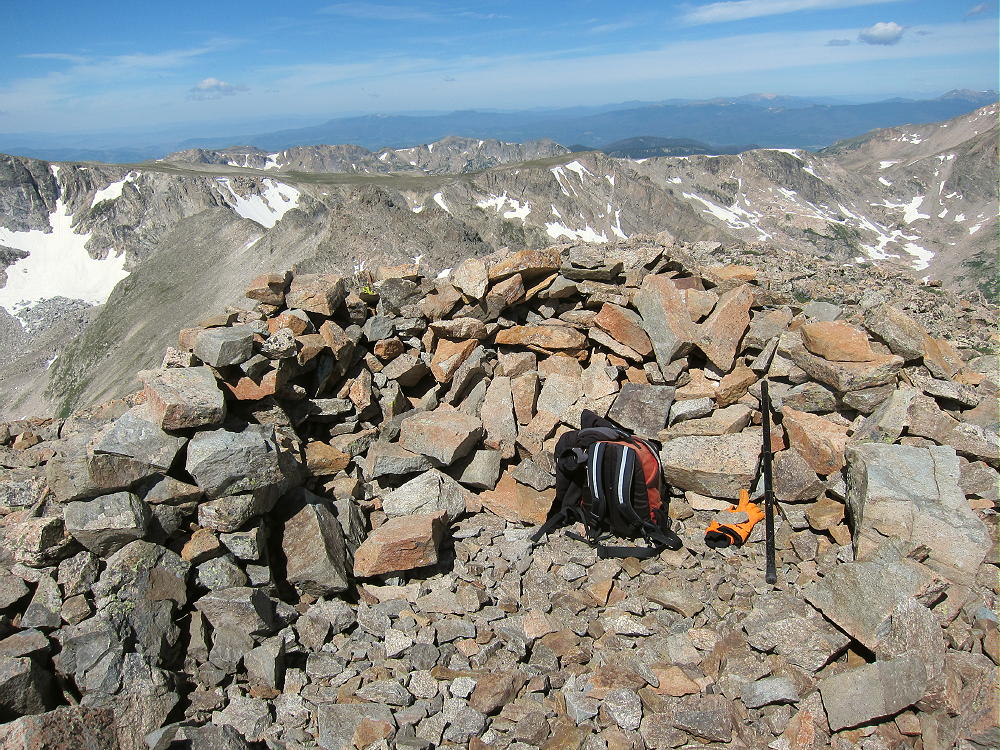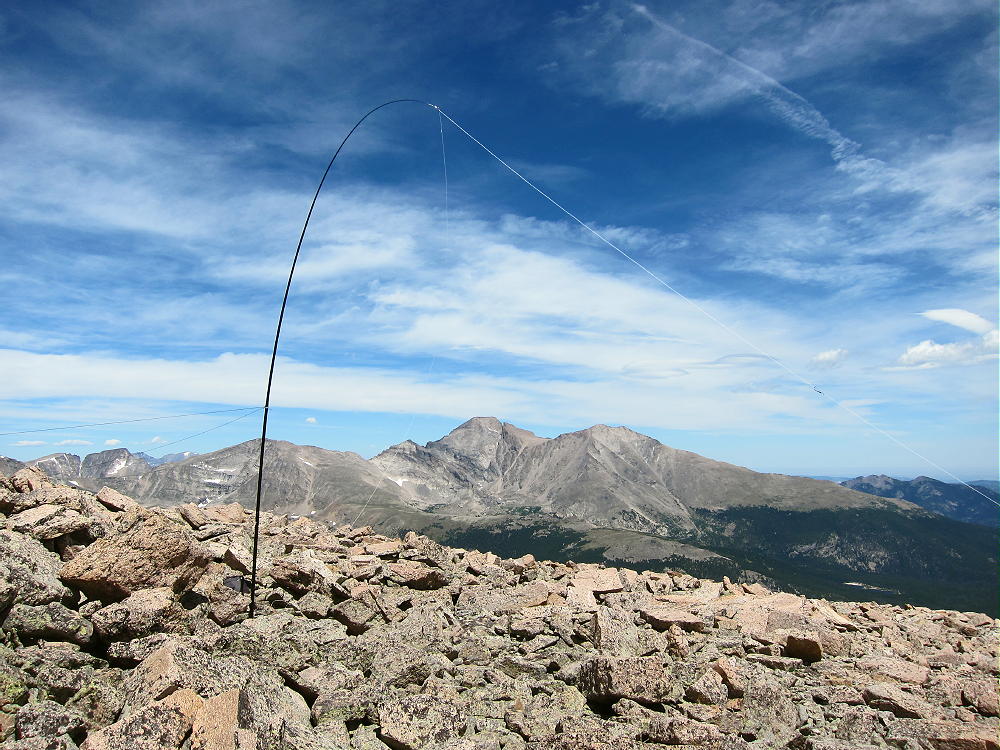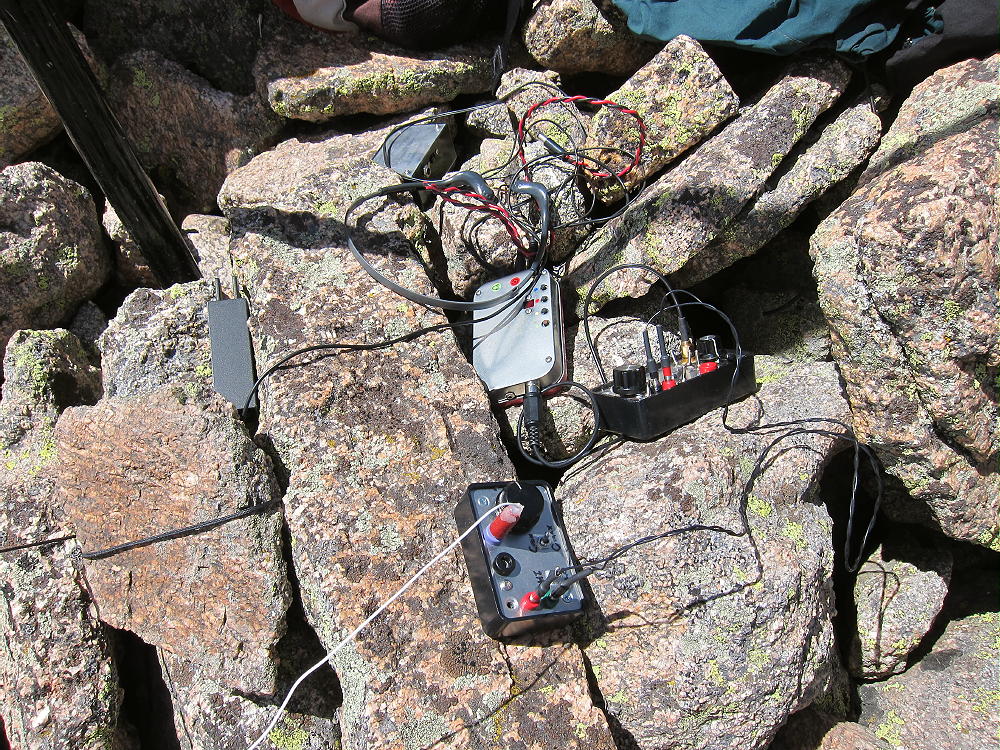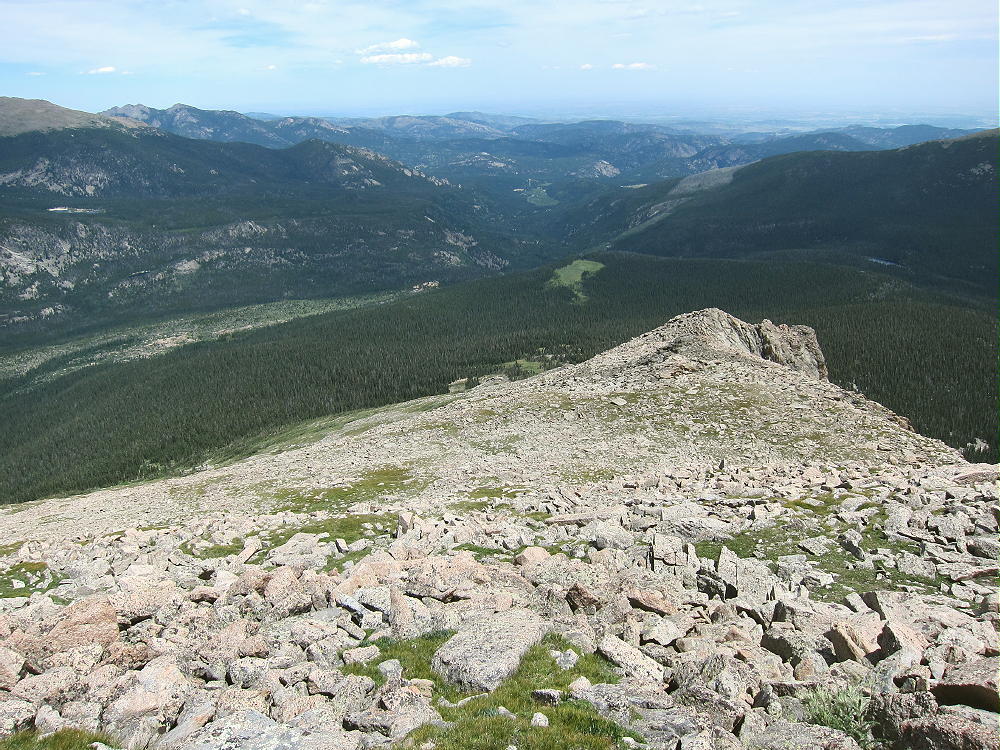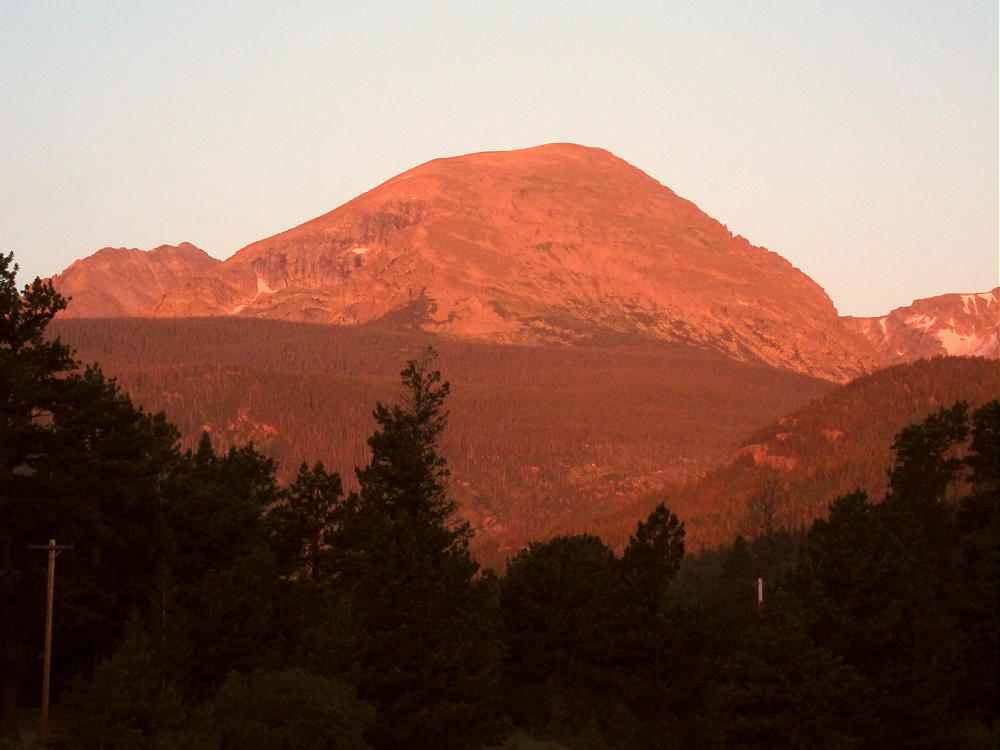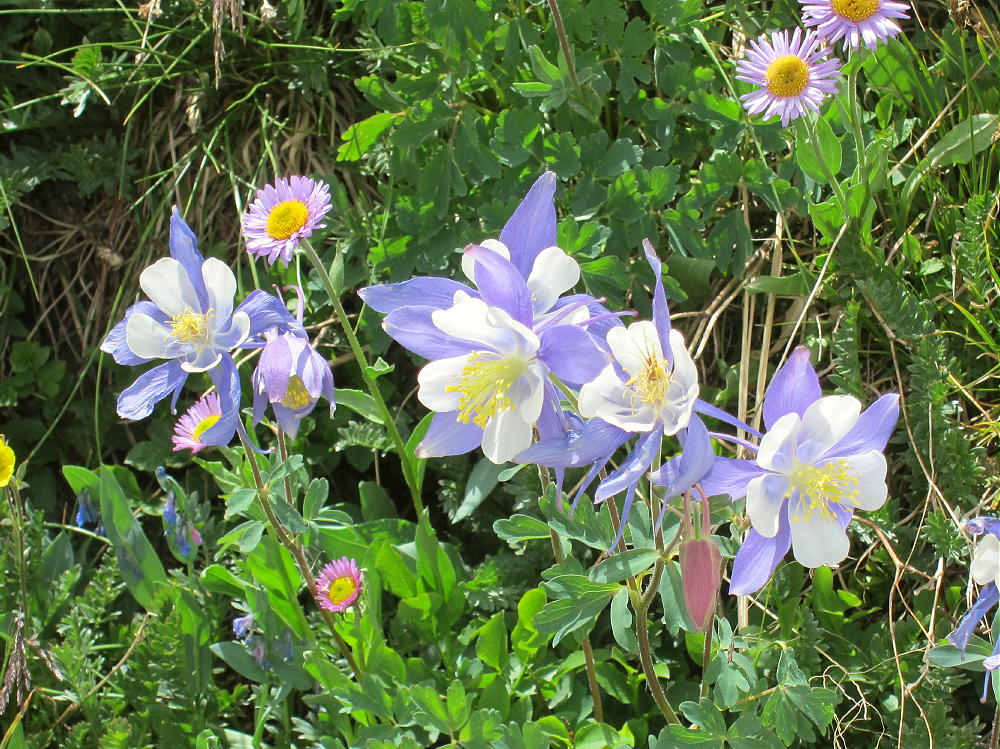W0C/FR-014
Copeland Mountain
4016 m / 13176 ft
First Activation
Aug 6, 2015
By KX0R
Copeland Mountain stands prominently 1-1/2 mile east of the Continental Divide, in the southern part of Wild Basin.
Key Points:
• Rocky Mountain National Park
• Accessible trailhead
• Rugged alpine summit
• Incredible views
• Challenging hike
• Infrequently climbed
• No marked route
• No trail to the top
• Navigation and route-finding required
• Fine HF site
• 14 miles round-trip
• 4675 vertical feet
• Grade II
• Class 2
Copeland Mountain sees few visitors, but it offers a fine alpine SOTA activation. This high peak combines a challenging bushwhack hike with great scenery. Climbing to the top requires a sustained, steep hike in thin air. Only activators with off-trail experience and excellent fitness should attempt to climb Copeland. Since part of the route is far above tree-line, this expedition should be reserved for a day with good weather. The mountain is most accessible in summer and fall.
The trailhead is at the Wild Basin Ranger Station. An easy dirt road leads two miles west from the Peak to Peak Highway, Route 7, to the trailhead. An entry fee or pass may be required to enter the National Park. The popular trailhead is not large, and it often fills before 8 AM on summer weekends. With the early start needed for Copeland, parking should not be a problem. An early start may avoid the entrance fee.
From the trailhead, follow the signed, marked trails through Wild Basin to Ouzel Lake. The route leads west along the roaring North Saint Vrain Creek; across a bridge at about 1.5 miles; west to Calypso Cascades; northwest past Ouzel Falls; and west on the Bluebird Lake Trail to Ouzel Lake. Ouzel Lake is about 5 miles from the trailhead. Copeland Mountain looms high above the south side of the Lake.
The hike to Ouzel Lake is just the introduction. While only two miles of the journey remain, more than 3000 vertical feet must be ascended from the Lake, and there is no real trail!
To access the mountain, Ouzel Creek must be crossed. This is best done east of the lake outlet. When I was there, a convenient log-bridge was available about two hundred feet from the Lake. From the creek crossing, hike around the east side of beautiful Ouzel Lake. Climb up the forested drainage south of the Lake – follow the available game trails. Try to maintain a heading slightly east of south. The primary goal is to ascend the east slopes of Copeland far enough southeast to minimize the gradient of the climb. A second objective is to avoid the thickets and swampy parts of the densely-forested, north-facing drainage.
The animals know where to go. Game trails lead through the forest and up the slopes; I was able to climb through the sub-alpine jungle by following the deer, elk, and moose. A couple of slide paths just below tree-line helped guide me higher. These steep slopes have been partly cleared of trees by avalanches. The game trails led me up to the slide paths.
The most challenging part of the hike is the first half-mile or so up through the dense forest above Ouzel Lake. The worst problem is the lack of visibility – a GPS unit is useful for navigation, and for recording the track. The climb becomes easier above 10,600 feet; avoid thickets, and pick a route through the trees toward timberline. It’s easy to see where to go above the forest. Soon wonderful views open up!
The steep northeast ridge of Copeland is a mix of talus and tundra. I saw no marked route or cairns, but there are useful game trails and a few climbers’ paths. Climb southwest toward the summit. The route is steep, but there are almost no other problems; no scrambling is required. The climb up the alpine slope to the peak ascends about 2000 vertical feet in one mile – this is a real test! I thought it was more difficult to descend than to ascend.
Copeland Mountain location provides incredible views of all the high peaks of Wild Basin: Longs Peak, Mount Meeker, Pagoda Mountain, Chiefs Head, Mount Alice, Isolation Peak, Ogalalla Peak, and Saint Vrain Mountain.
Several large lakes lie below Copeland. The entire area is heavily glaciated – this is some of the most rugged terrain in the National Park. The Indian Peaks Wilderness and its craggy alpine peaks are only a few miles to the south. Copeland is high enough to see over the Divide to the west. The Never Summer Range, Parkview Mountain, the Park Range, the Gore Range, and the Flat Tops are all visible from Copeland!
I was surprised to find a large wind shelter built by climbers just west of the actual peak; however, it was so windy that I decided not to set up my activation there.
I found a spot among some boulders east of the summit; this worked well. The large, rocky activation zone is relatively flat. There’s plenty of room for any kind of activation, but a pole is necessary to erect a wire antenna. It’s easy to set up and get on the air.
Copeland is an almost perfect radio site. It stands far enough from other peaks that there’s little blockage to HF signals in any direction except north, where Longs Peak and its neighbors raise the horizon several degrees. The HF noise level is very low – there’s no development for miles. Copeland is probably a useful VHF/UHF site, because it looks out across a wide area of the eastern Plains, including parts of the Denver Metro area. The view west also includes some populated areas in the valleys across the Divide.
I made 25 HF contacts on three bands from Copeland. It was a pleasure to operate from this wonderful high spot on a fine sunny day…never mind the wind!
I saw no one on the mountain. It still amazes me that such fantastic mountain paradises are accessible from our cities, yet sometimes I have an entire alpine summit to myself all day!
As nice as Copeland Mountain was for my climb, it could be a deadly place in bad weather. It’s totally exposed to severe lightning storms, high winds, hail, and snow. Wild Basin and the Divide generate strong storms when humid systems come into the area; this mountain should be avoided except in dry, stable weather. It’s impossible to descend quickly!
I dreaded the descent when I was on top, but it wasn’t so bad. It’s very steep, and care is required most of the way down to tree-line.
The dense forest was easier to descend than to ascend – I used my GPS track, and the game trails were where I needed them! The swampy bogs were full of wildflowers in sunny spots.
I started the hike at 6:20 AM, and I was on the summit at 10:41 AM. I stayed on top until 1:03 PM, and I returned to the parking lot at 5:34 PM. It took slightly longer to descend than to ascend!
Copeland Mountain is one of the best SOTA peaks I’ve activated. It’s totally a SOTA Classic, with its pristine wilderness location, stunning views, a very challenging route, and an excellent activation zone. I recommend it only to activators who are prepared for the serious effort it requires. Copeland is best climbed in ideal summer or fall weather with lightweight gear.
73
George Carey Fuller
KX0R
![]() !! WARNING !! There are old mountaineers, and
bold mountaineers... there are no old-bold mountaineers.
Hiking and mountain climbing are potentially hazardous activities particularly in Colorado with its extreme elevations. I am not accepting responsibility for any death or injury resulting from activations based on my trip reports. Proper training, experience, and personal capability assessment is required - enjoy!
!! WARNING !! There are old mountaineers, and
bold mountaineers... there are no old-bold mountaineers.
Hiking and mountain climbing are potentially hazardous activities particularly in Colorado with its extreme elevations. I am not accepting responsibility for any death or injury resulting from activations based on my trip reports. Proper training, experience, and personal capability assessment is required - enjoy!











